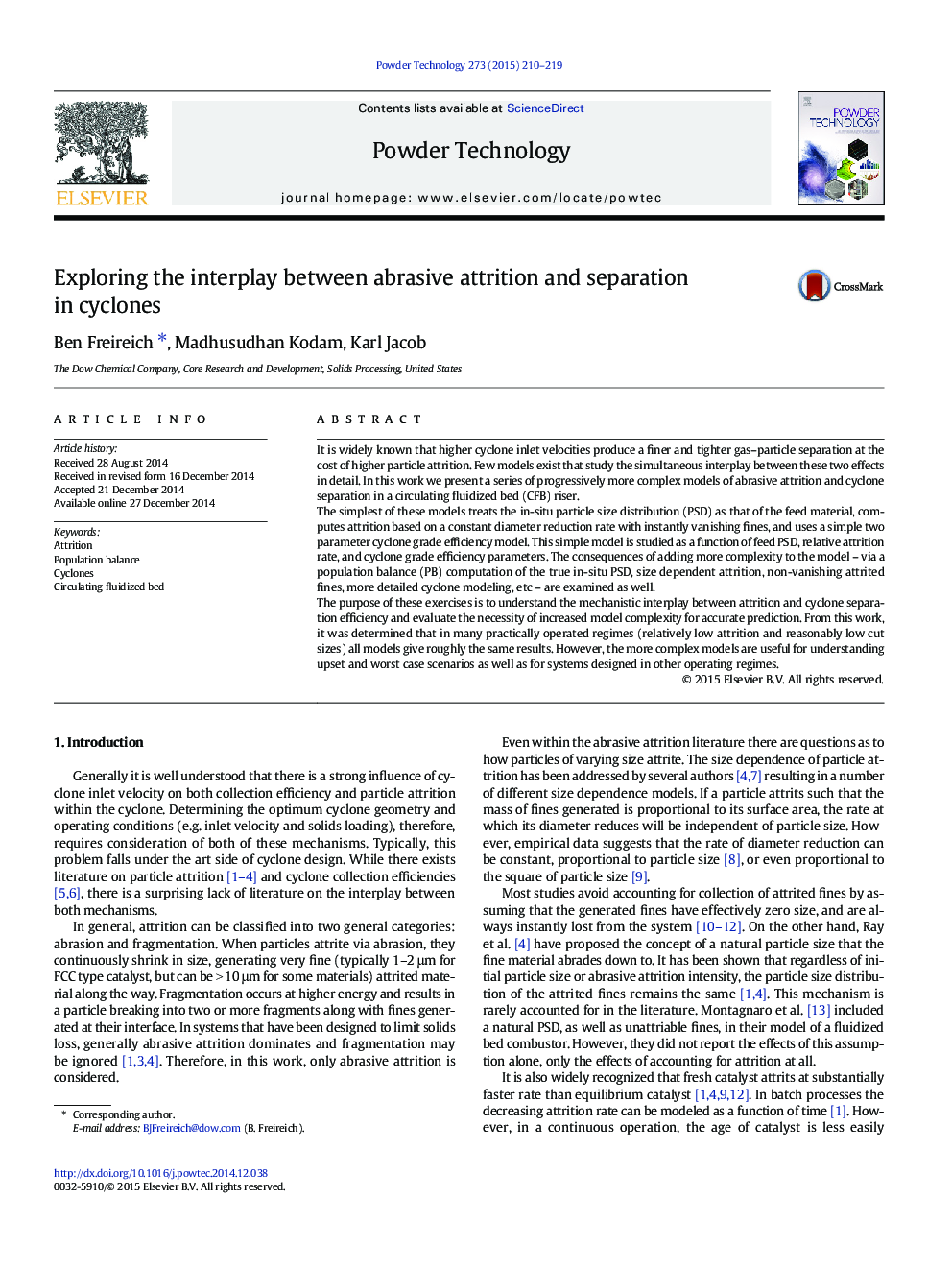| Article ID | Journal | Published Year | Pages | File Type |
|---|---|---|---|---|
| 235650 | Powder Technology | 2015 | 10 Pages |
•Combine effects of attrition and separation are modeled with increasing complexity.•Identified 3 regimes: attrition dominated, separation dominated, and transition.•Multiple models studied: e.g. feed vs. steady state PSD, size dependent attrition, retained fines.•In typical operation (attrition dominated regime) all models give roughly the same results.•For a properly designed system, increase in cyclone inlet velocity will decrease collection.
It is widely known that higher cyclone inlet velocities produce a finer and tighter gas–particle separation at the cost of higher particle attrition. Few models exist that study the simultaneous interplay between these two effects in detail. In this work we present a series of progressively more complex models of abrasive attrition and cyclone separation in a circulating fluidized bed (CFB) riser.The simplest of these models treats the in-situ particle size distribution (PSD) as that of the feed material, computes attrition based on a constant diameter reduction rate with instantly vanishing fines, and uses a simple two parameter cyclone grade efficiency model. This simple model is studied as a function of feed PSD, relative attrition rate, and cyclone grade efficiency parameters. The consequences of adding more complexity to the model – via a population balance (PB) computation of the true in-situ PSD, size dependent attrition, non-vanishing attrited fines, more detailed cyclone modeling, etc – are examined as well.The purpose of these exercises is to understand the mechanistic interplay between attrition and cyclone separation efficiency and evaluate the necessity of increased model complexity for accurate prediction. From this work, it was determined that in many practically operated regimes (relatively low attrition and reasonably low cut sizes) all models give roughly the same results. However, the more complex models are useful for understanding upset and worst case scenarios as well as for systems designed in other operating regimes.
Graphical abstractThe overall efficiency of a cyclone used in a circulating system is a function of the catalyst abrasive attrition rate as well as the cyclones ability to capture solids. Gray and black show overall efficiency from feed or steady state particle size. Red shows effect of increased cyclone inlet velocity.Figure optionsDownload full-size imageDownload as PowerPoint slide
